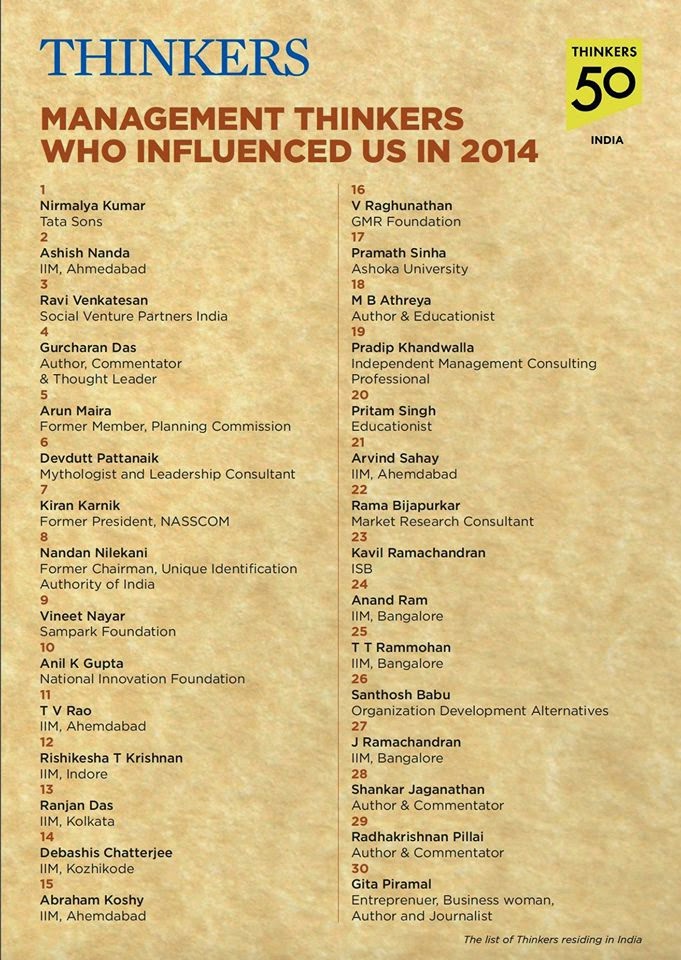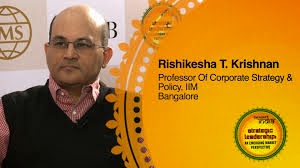A couple of weeks ago, I lauded the new book by Jean Dreze
and Amartya Sen for its clear identification of a challenge book for India. I
just finished reading the recent book by their “competitors,” Jagdish Bhagwati
and Arvind Panagariya, titled India’s Tryst with Destiny: Debunking myths that
undermine progress and addressing new challenges. To be chronologically
correct, I should have read them in the reverse order, but I don’t think it
made much of a difference from a content perspective!
Bhagwati & Panagariya Have Strong Views….
As has been written extensively in the press, Bhagwati and
Panagariya are emphatic that India’s number one priority should be making all
possible efforts to sustain economic growth. They argue that India’s poor has
benefited from sustained economic growth, and provide evidence that this holds
true even for people from socially and economically disadvantaged groups. Though
India has, thanks to the growth in the last two decades, more money to spend on the provision of
social (health, education) services, they point out that we lack sufficient
resources to provide the kind of welfare services that the UPA (more
specifically, the NAC) wishes to. Even if we are to do much more for the poor, Bhagwati
and Panagariya are completely against the government playing the role of
provider. Instead, they prefer that the poor be assisted through cash transfers
(for food security), insurance mechanisms (for health), and vouchers (for
school education) on the grounds that these will be better aligned with market
mechanisms, involve less corruption, and achieve better results.
A few things struck me while reading this book. One is the
aggressive tone of the authors, combined with a knowledgeable air that suggests
that these issues are so obvious that anyone who thinks otherwise must be
living in a world of delusion. They are almost disrespectful to Dreze and Sen
when they refer to arguments that the latter have made in the past which
conflict with their own. This aggressive tone is related to the second feature
of this book: a strong conservative ideological slant – small government,
minimum regulation, and worship of the market. A combination of one and two
results in their unapologetic air about the growing incidence of billionaires
in India. Here, they unfortunately fail to differentiate between those who made
their billions from knowledge-based companies, and those who did so thanks to privileged
access to scarce resources.
I was surprised to find their endorsement of some unsustainable
distortions in the education system. One of their findings is that private,
unrecognized schools provide better education than government schools, even
though the teachers in the former are paid several times less than the latter,
because of better supervision and oversight. But, from all reports, teachers in
such private schools are under-paid and over-exploited, and the schools themselves
have poor infrastructure including no playing or recreational space. This may
be an economically “efficient” solution, but surely it can’t be the basis for
building a modern productive workforce.
It must be obvious by now that I liked the Dreze-Sen book
better! For one, it has a scholarly and more even-handed tone. Dreze & Sen
don’t dismiss growth (as Bhagwati and Panagariya might lead you to believe),
they just suggest that it’s a real shame that a country with our resources
can’t do better for its citizens. Dreze and Sen provide a broader perspective
of development (not surprising considering that’s Sen’s forte) while Bhagwati
and Panagariya take a mechanistic view and look at people with the lens of the “economic
man.” Perhaps Dreze and Sen are a tad more idealistic and romantic than
Bhagwati and Panagariya, but surely a country with our history and potential
needs to retain a dose of idealism. I liked Panagariya’s earlier book (India:
The Emerging Giant, 2008) but this one has an impatient, “angry man” air about
it that detracts from its core arguments.
… But Neither Get the Importance of Technology &
Innovation
As I wrote in my earlier post, a particularly attractive
dimension of the Dreze-Sen book is their openness to different models, and a
willingness to learn from “bright spots.” On the other hand, Bhagwati and
Panagariya are dismissive of such bright spots that don’t fit in with their
ideology. This suggests to me that Bhagwati and Panagariya are much less open
to innovation and trying out new things. In fact, they take a very explicit
classical economics view of capitalism and labour as the main inputs to the
production function, taking us back to a time before Solow when technological
change was no more than a residual explanation of growth. I am glad that our
government takes a more modern view of change, and is explicitly trying to
encourage innovation to solve social problems (Both the National Innovation
Council and the India Inclusive Innovation Fund have this focus).
But, to be fair, neither Dreze & Sen nor Bhagwati &
Panagariya appear to have understood the tremendous potential of technology to
reform health and education. Their discussion about both assumes standard,
people-intensive solutions for which issues of accountability and control are
obviously important. But, as is increasingly clear (see my posts on Massively Open Online Courses [MOOCs ] and new models for inclusive healthcare), new
models are emerging which may make their ideological differences less relevant.
Creative use of MOOCs could allow us to achieve higher
quality teaching with a far lower number of teachers. The role of the teacher
would also change from being the source of knowledge to being a facilitator of
learning. Organizational issues related to who is the employer therefore become
less important. Similarly, initiatives like Sughavazhvu Health care show that
with the use of improved technology, and a stronger preventive healthcare
orientation, it is possible for alternately trained personnel to take care of
primary health care. Here again it doesn’t need to be a choice between poorly
managed government-run public health centres (as Bhagwati and Panagariya would
characterize them) and exploitative private doctors (as Dreze and Sen would
call them).
Government’s role and priorities would be different under
such alternate paradigms. In education, the role of government would shift to
making available low-cost, high speed broadband internet connections to
students along with a low-cost access device, and in providing financial
support for the creation of high quality content in regional languages. In
healthcare, the government’s role would be in re-establishing a focus on public
health, setting standards for certification of medical health professionals who
are not doctors and providing a communication backbone that would allow the low
cost use of technology in primary health care.
Conclusion
In their eagerness to prove the superiority of their
respective positions, leading economists are in danger of missing out on the
power of innovation, the ability to bring fresh thinking to the solution of
tough problems. Perhaps we need greater openness to new ideas, and a healthy
pragmatism instead?


















No comments:
Post a Comment